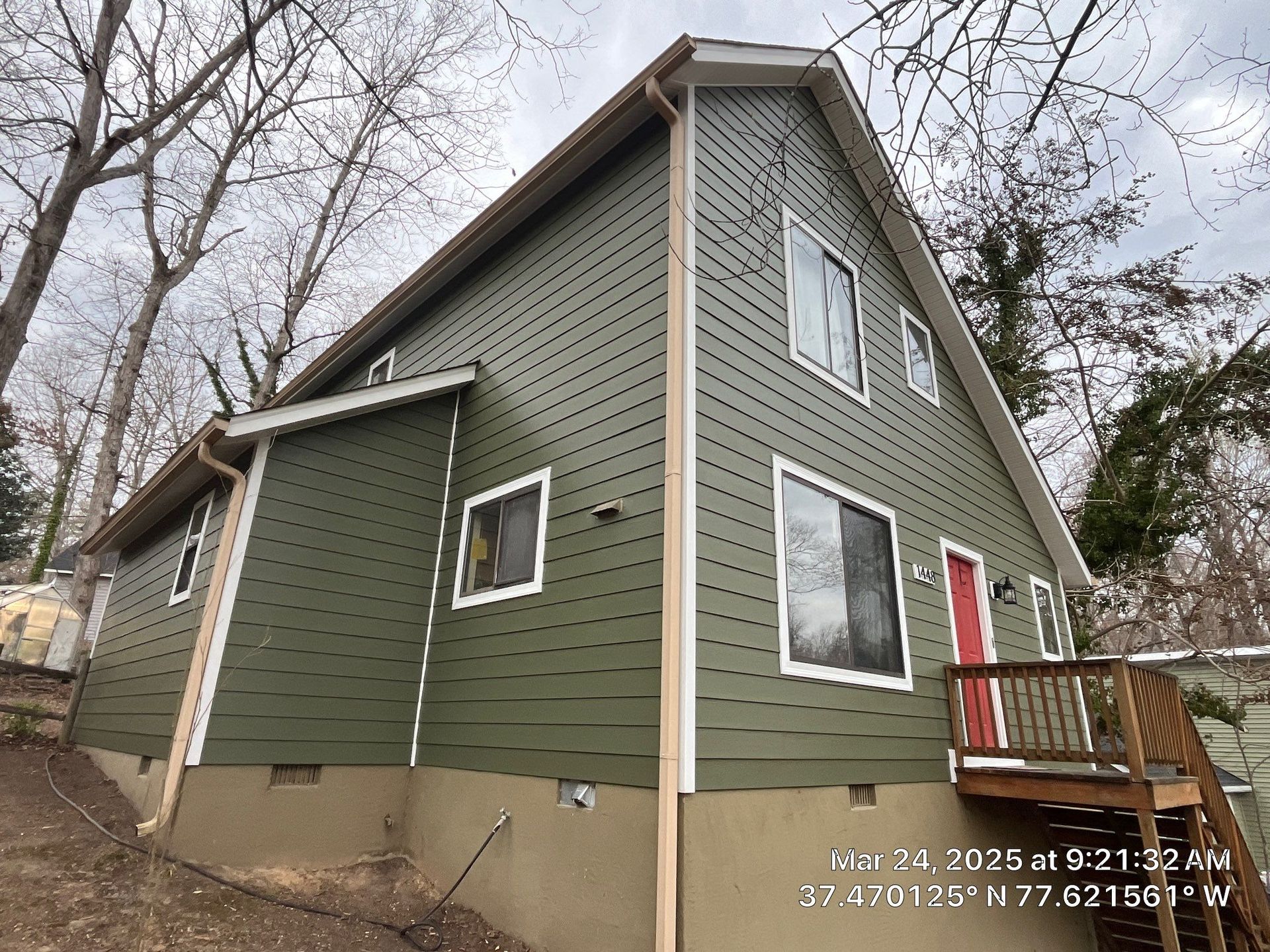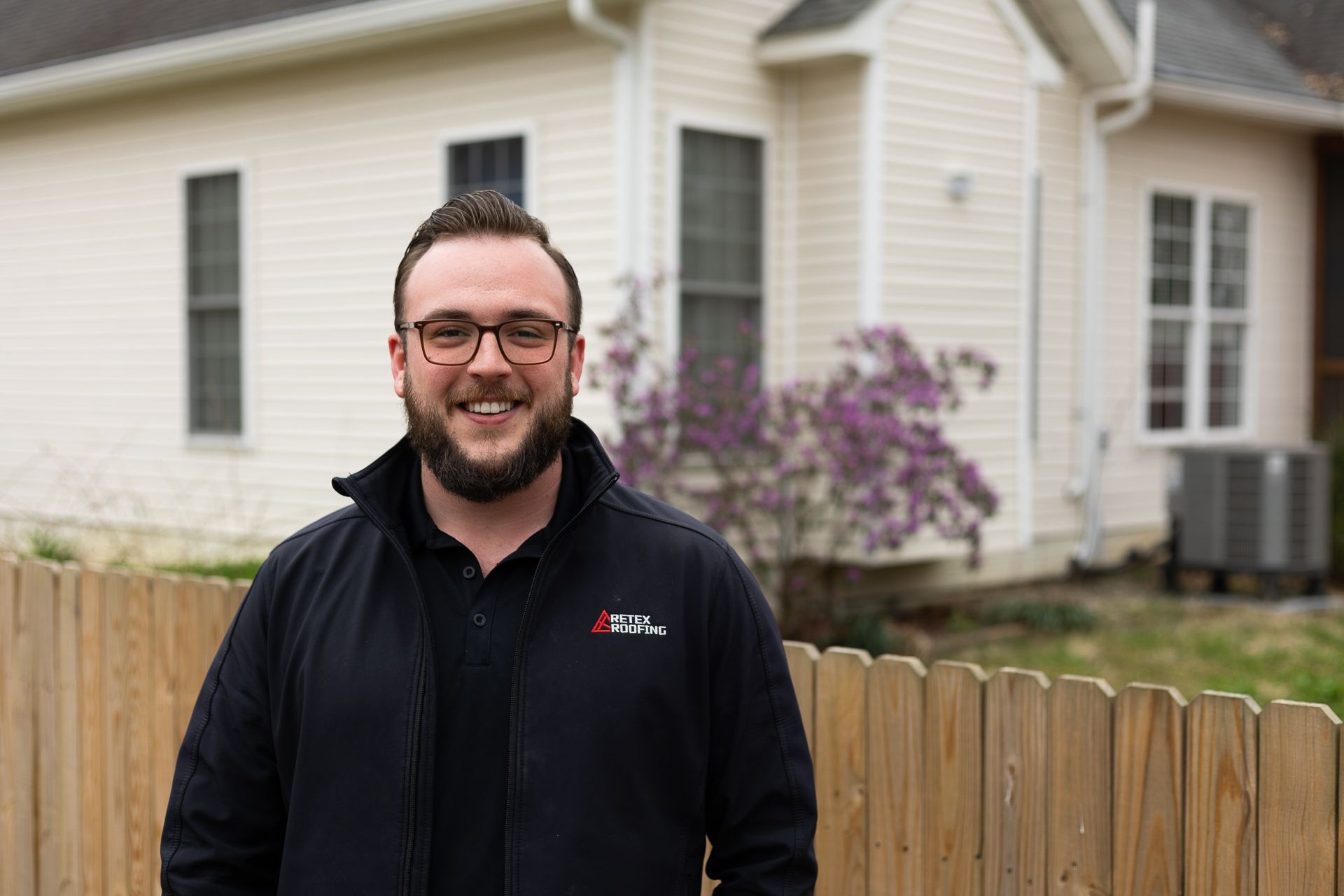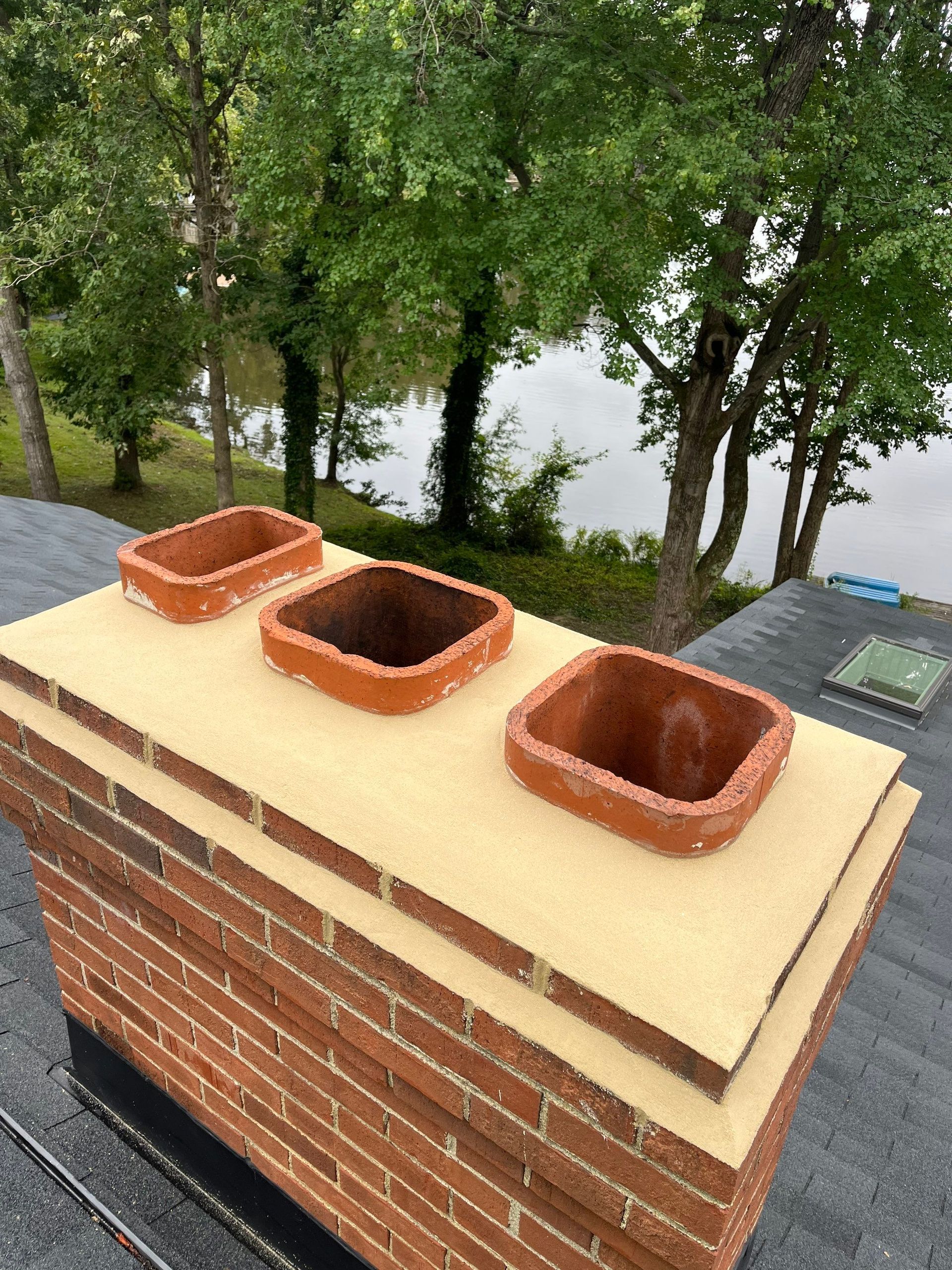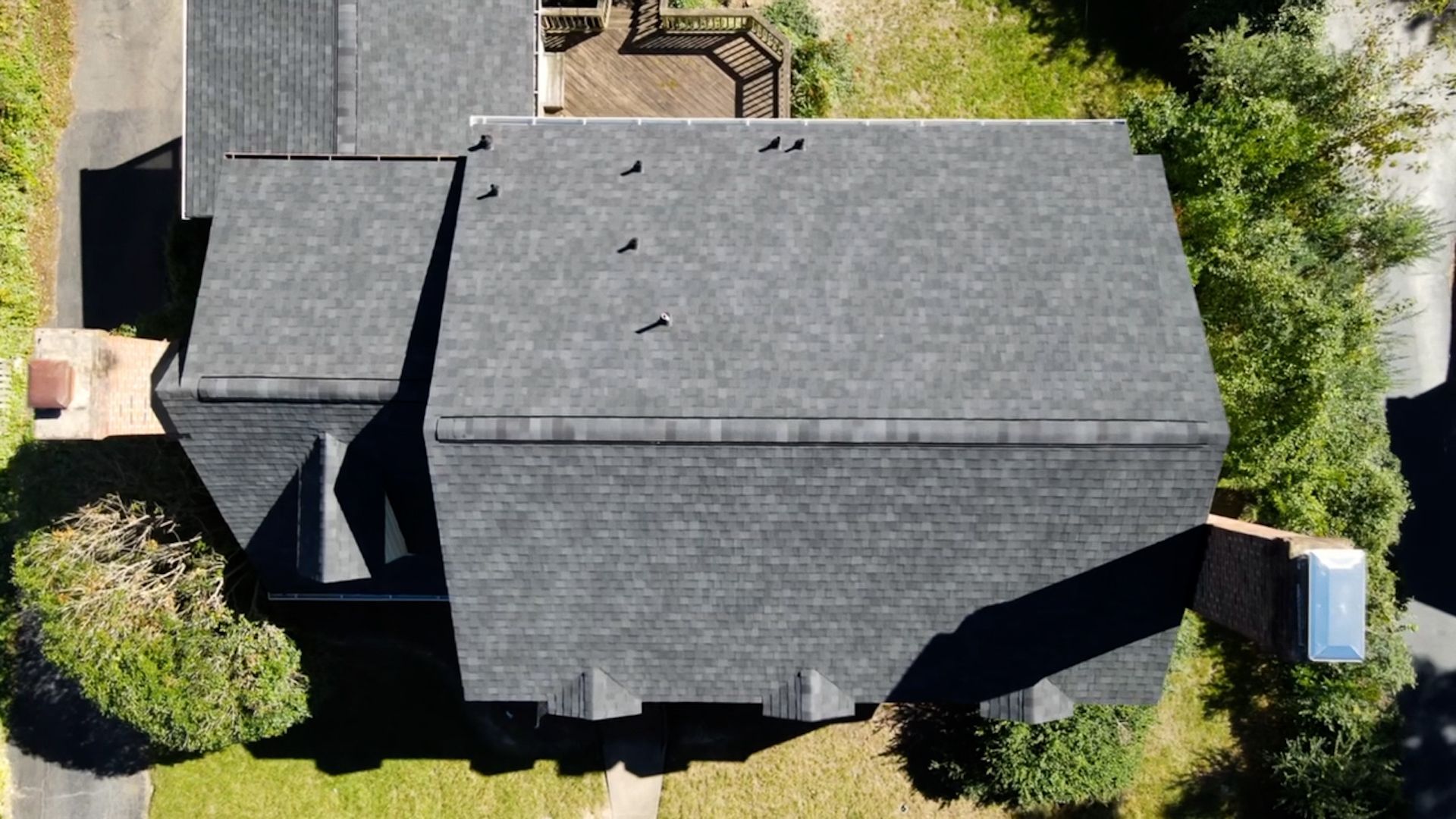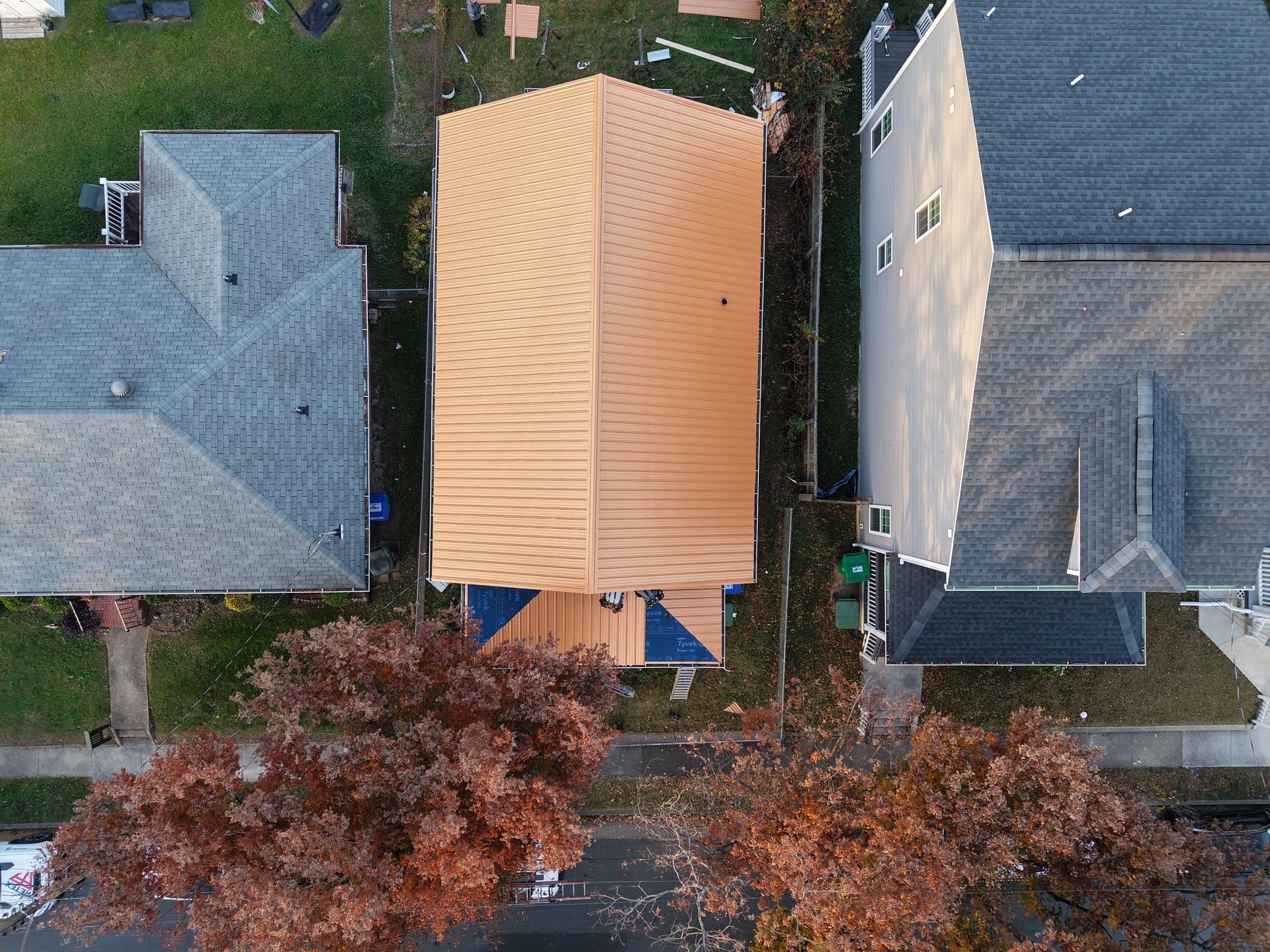Let’s Talk Flat Roofs: Modified Bitumen Vs. Single Ply Membranes

A modified bitumen flat roof installed by Retex Roofing in Richmond, Virginia.
If you’re considering a new flat roof and you’re in the process of planning and budgeting, or if you have a more-immediate roofing issue such as a newfound puncture, tear, or leak, you may be considering your roofing material options. The two main flat residential roof membranes are modified bitumen and single-ply – but how do they compare to each other, and which is the right roofing material for your flat roof?
Let’s discuss the two as well as their advantages and disadvantages.
In the simplest terms, a modified bitumen roof is an asphalt roof with layers of glass fiber, polyester, and/or polyethylene added for strength and durability. Developed in Europe in the mid-1960s, modified bitumen came about as a solution to using crude oil’s lower-quality by-product. This roofing material has been used in the U.S. and Canada since 1975.
The main advantages of a modified bitumen membrane roof are its ability to handle high and low temperature extremes and changes; its installation versatility, with the ability to be torched, mopped, or cold applied to a roof; and its multi-layer structure, creating a thicker roof layer for protecting against Mother Nature. The main drawback to these flat roofing systems is its more-intensive and therefore expensive installation process, with multiple applications and skilled labor requirements for proper installation. Modified bitumen roofs are also not ideal in ponding water situations where water doesn’t drain off the roof. Its dark color also means it absorbs the sun’s UV rays, hurting the roof’s environmental footprint and your home’s energy efficiency.
Meanwhile, a single-ply membrane is a sheet of rubber or other synthetic material that can be mechanically fastened or glued to your roofing insulation. The two most common single-ply membranes are EPDM and TPO, which differ in their chemical makeup, installation, and energy efficiency.
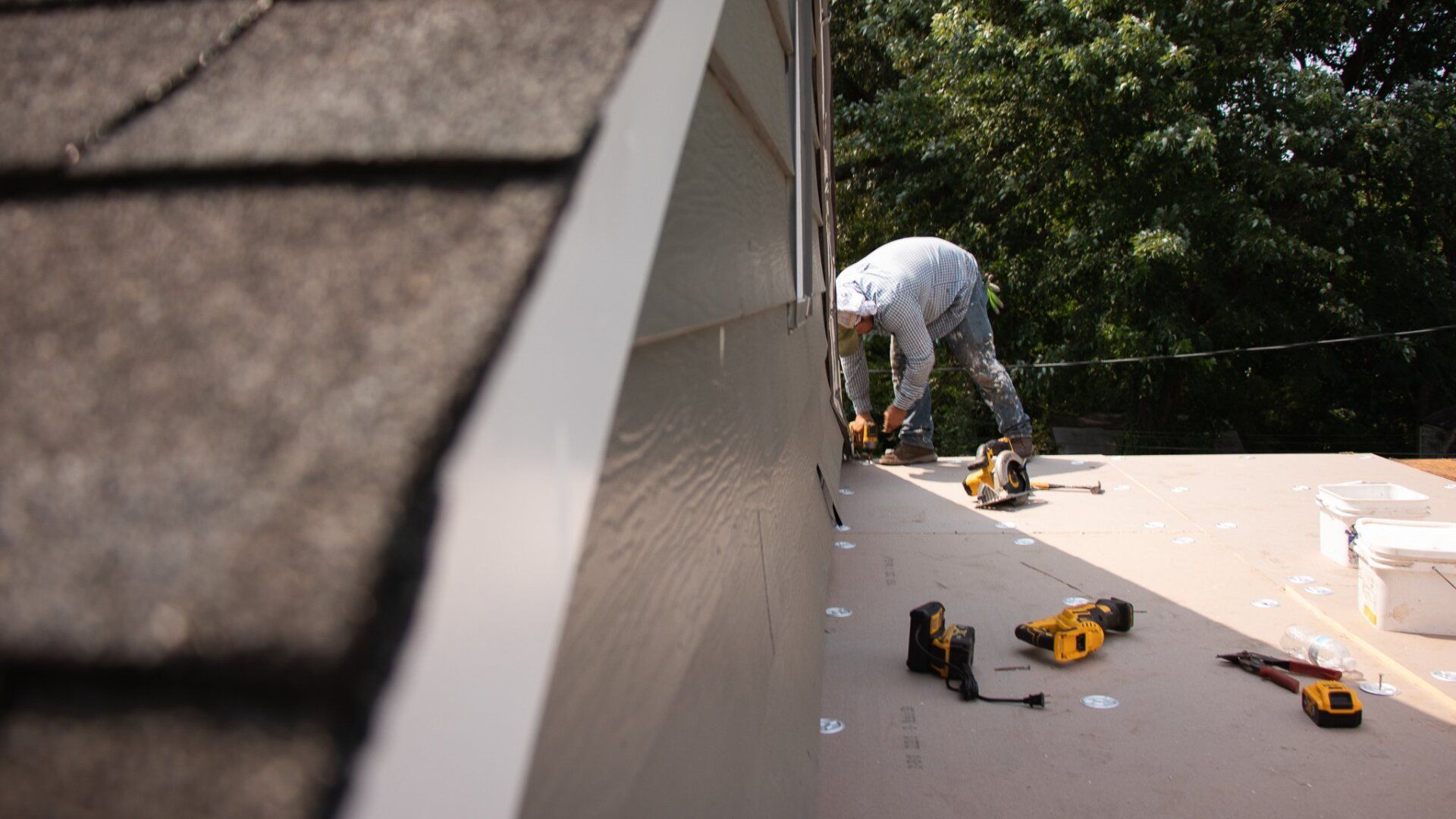
A Retex Roofing worker installs a TPO flat roof in Richmond, Virginia. (Photo by Katelyn Lewis/Retex Roofing)
EPDM stands for “ethylene propylene diene monomer.” EPDM is a durable and flexible synthetic rubber roofing membrane that is often mechanically attached and uses seam tape to seal its seams. Naturally dark in color, EPDM membranes are often described as “black roofs” and tend to retain the sun’s heat. Meanwhile, TPO stands for “thermoplastic polyolefin,” and these membranes consist of a single layer of synthetics and reinforcing scrim used to cover flat roofs. Generally white, these membranes are naturally reflective of the sun’s UV rays, diverting heat from your home. A TPO roof is usually chemically adhered to the insulation board, and its seams fused with a hot air gun.
The advantages of a single-ply membrane roof include an easy installation and cleanup process; reflectivity, depending on the type, which increases the energy efficiency of your home; great performance in all weather conditions; and its resistance to punctures, tears, chemical spills, oil, grease and sunlight. The main disadvantage of this flat roof membrane is that any puncture or tear, such as from a piercing tree limb, could threaten the entire underlying structure. Its color and texture also noticeably change over time, and it tends to have a shorter lifespan than its modified bitumen counterpart.
Here at Retex Roofing, we want to educate you on your roofing system so you know exactly what you’re getting when you choose to fix or replace your flat roof with our team. It’s our goal for you to feel comfortable knowing your roof is in great hands, and we won’t run circles around you with big terms or unnecessary add-ons to your bill that you don’t understand or want.
If you need to replace your flat roof and you live in the Richmond, Virginia, region, our Retex Roofing team would be happy to assist you. Give us a call at (804)-442-3314 or click the button below to let us know how we may be able to help you with your project.

